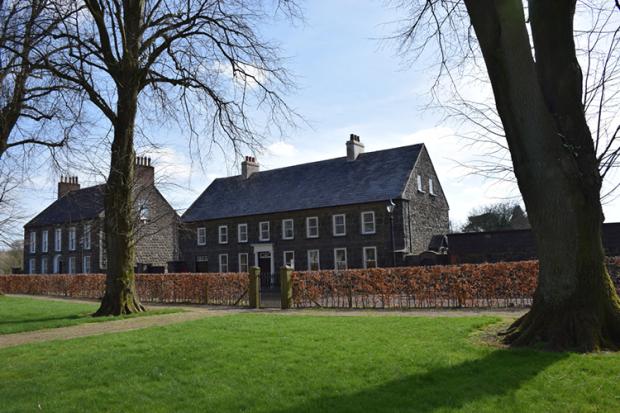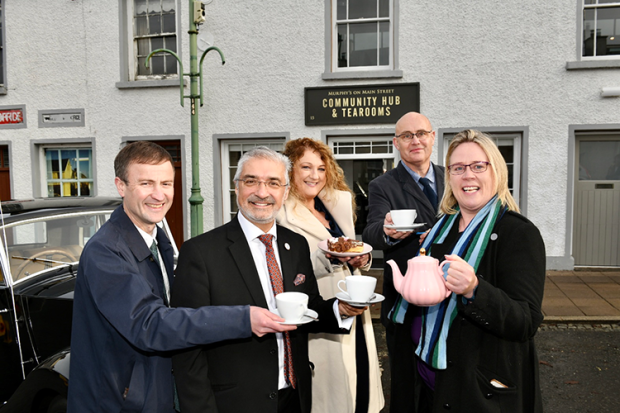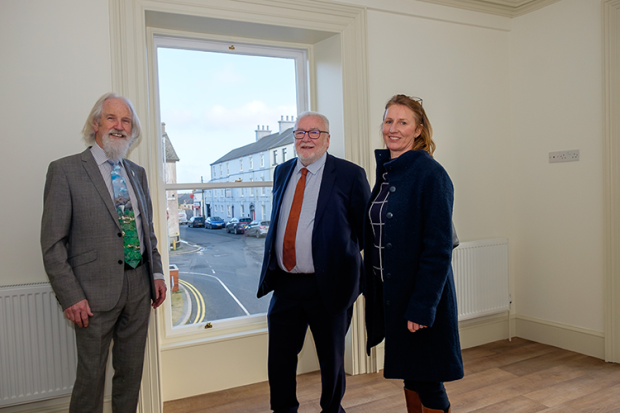Village Catalyst Pilot case studies
From 2019 to 2022 the Department carried out a pilot project with the Department of Agriculture Environment and Rural Affairs (DAERA) and the Architectural Heritage Fund (AHF) to explore the benefit of investing in historic buildings at risk, in small rural settlements, as a way of tackling rural poverty and social isolation. Four projects were supported.
About Village Catalyst Pilot
Funding for the pilot was provided from DAERA’s Tacking Rural Poverty and Social Isolation initiative (TRPSI). DfC administered the scheme, and the AHF identified the potential candidates and worked with them to develop suitable proposals.
The support offered covered the shortfall between funds gathered for a project and those required to deliver it (up to a maximum of £200k).
The candidates were selected through the AHF’s work with community groups to develop proposals for underused historic buildings. DfC has supported this work since 2017 through the Regeneration Stream of the Historic Environment Fund.
Case studies
Gracehill Old Post Office

The planned village of Gracehill is Ireland’s only intact Moravian settlement, and the former post office on Montgomery Street on the square dates from 1766-68, and was an important functional part of the settlement, serving originally as the Moravian community stores.
Operated by the Gracehill Old School Trust (GhOST), the Village Catalyst scheme to reimagine the building as a community hub with accommodation was one of the four Village Catalyst pilot projects. The former shop now operates as a gathering place, holding pop up local craft and produce events for charity and the starting point for school tours to name just a few uses. This has given the building a new purpose which will sustain it, while giving back to the community.
The Moravian settlement of Gracehill is also part of a transnational bid for UNESCO world heritage status with Moravian settlements in Saxony Germany and Pennsylvania USA.
Pat Murphy’s House, Ederney

The Pat Murphy House sits in the heart of Ederney and has historically been a social focus in the village. The building is an intact example of ‘living over the shop’, the previous owners having operated the shop while living above it. Now known as Murphy’s on Main Street, Ederney Community Development Trust have worked on the restoration, extension and adaptation to the previously ‘at risk’ listed building to provide a new community wellbeing hub. The building offers the community a place to connect through its coffee shop, community spaces and wellbeing facilities, alongside being a wayfinding base to link people to local natural and historical assets.
The Woolstore, Caledon

The Woolstore was a vacant building in the conservation area, built in the early 1800s and used to store raw wool for the vast Caledon Mill. The community was keen to restore the building as a tangible link to the industrial past and with help from AHF, Caledon Regeneration Partnership identified a need to provide childcare facilities within the village to keep families living and working there. It is now nearly two years since the Wool Store opened as a much-needed childcare facility in the Caledon conservation area, and the restored and extended building has now delivered for the community. The extended building combines contemporary spaces with characterful historic spaces to create a bright, welcoming building which doubles as a place to learn the story of Caledon’s rich industrial past.
The Chandlers House, Rathfriland

The Village Catalyst scheme at Rathfriland features a former bank (1911-2013), which prior to that was a soap and candle makers from the early 1800’s, sited on the market square at Rathfriland. Chandlers House was acquired by the Rathfriland Regeneration Group and boasts a community music and arts venue, space which is also used for educational and hobby classes. The residential space upstairs and to the rear (the former bank managers quarters) has been converted into four residential units, bringing affordable housing to the village centre. The project is the first Village Catalyst scheme to provide housing part funded by the Northern Ireland Housing Executive. The bank also benefits from connected outdoor space bringing additional well-being benefits for the local population.
